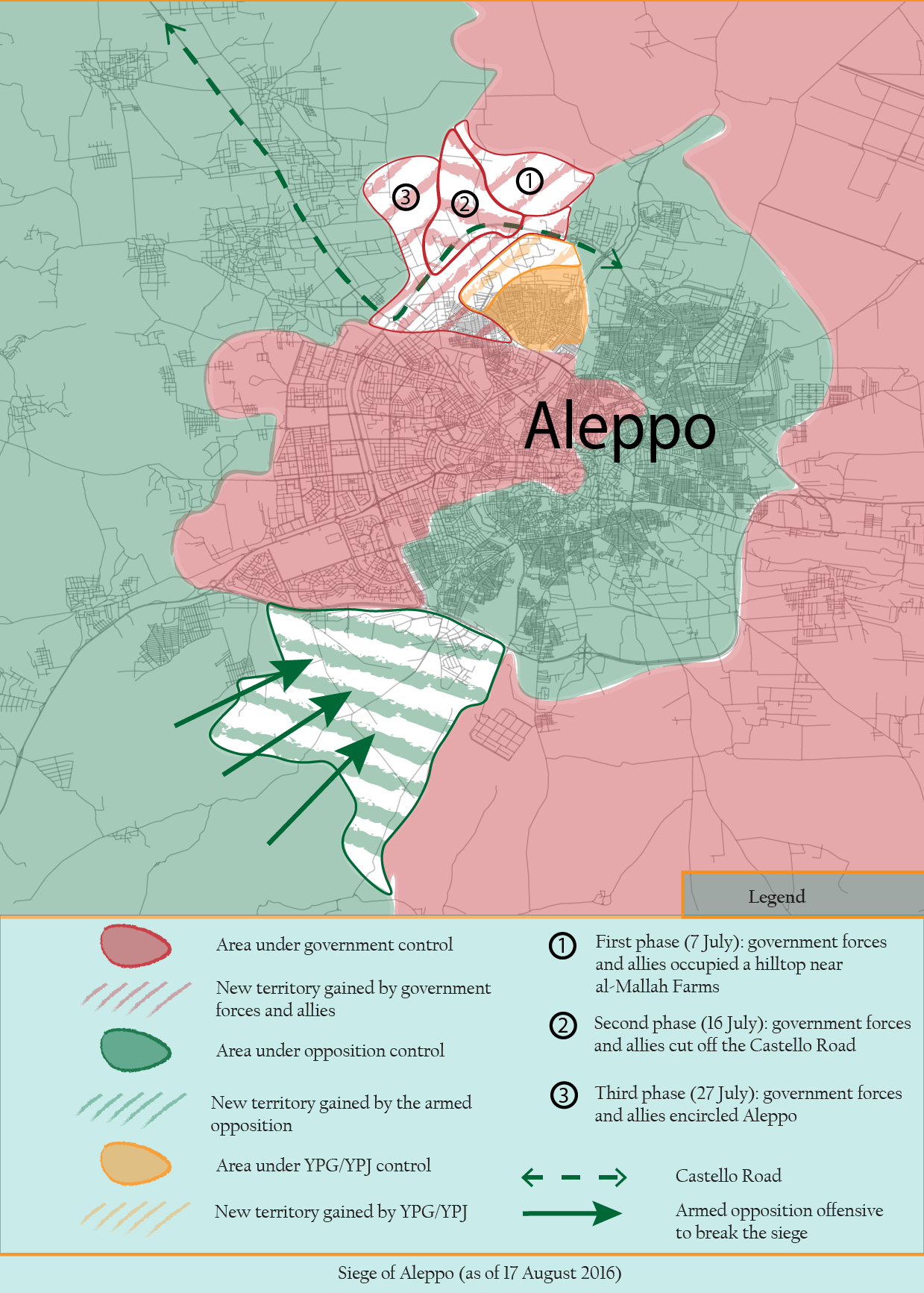“A salad in Aleppo can cost you your life,” an Aleppian author wrote at a time when rebels had imposed a siege on the western half of the city. In July 2013, rebels had cut the Khanasser supply line. Nothing could pass. The only way in was through Bustan al-Qaser – the Death Passage – where snipers lurked. There was a 10-fold difference between prices in the east and the west. People risked their lives to put bread on their tables in a country that had once exported wheat to the region. Rebels prevented anyone from taking food to the regime side. “Let Bashar feed you,” a rebel fighter jeered at those dodging sniper fire to get food.
But Aleppians living in the east of the city were horrified by the siege of the west. Under popular pressure, the rebels eased the blockade, letting people carry a few kilograms of food from east to west. At its heart, the war was not a conflict between people in the city, all of whom were suffering, but between an agglomeration of pro- and anti-regime forces.
Few would have thought then that regime-held Aleppo would survive the siege. The regime was losing the north, rebels were united and advancing, the overwhelming majority of the city and the countryside were outside government control. Yet in early 2014, government forces with the support of foreign and local militias took the initiative. They reopened supply lines, marched north and surrounded the city except for a narrow corridor in the northwest. This left the Castello Road as the only way in or out of the city for 250,000-300,000 people A road that symbolized food, freedom and life. But the siege was coming. This time against the east.
A ghost has been chasing eastern Aleppians since then. It never really went away. The threat of siege was always in the back of peoples’ minds. In February 2016, government forces came a step closer. They cut the Azaz-Aleppo corridor, disconnecting eastern Aleppo from the northern countryside.
The rebels fought back. They managed to repel countless offensives to cut off Castello Road. Thousands of bombs were dropped and many lives lost. Eventually eastern Aleppo was surrounded. In July 2016, government forces closed off the east of the city and bombed civilians who had nowhere to go. Prices skyrocketed. The price of a kilogram of bread soared tenfold. The spectre of starvation in Syria’s biggest city loomed.
Al-Hayat, the largest Arabic-language newspaper headlined its coverage: “Aleppo: A six-month war of attrition.” About 10,000 rebel fighters were up against about 5,000 men from the government and its foreign allies. Rebels under the command of Ahrar ash-Sham and Jabhet Fatah ash-Sham (previously Jabhet an-Nusra) would first try to break the siege and then diminish any regime presence in the area.
To everyone’s surprise, the rebels were united and effective. It took them one week to break a siege that had taken more than two years for the regime and its militias to impose. Thousands of Aleppians celebrated in the eastern part; vegetable and fruit supplies resumed. Of course, this did not mean peace. The Syrian and Russian Air Forces intensified their strikes, taking out some of the last hospitals in the city.
What were the rebels planning? Aljazeera Arabic speculated about Ahrar ash-Sham’s plan. “The rebels will break the siege from two sides, one from the south [ar-Ramouseh front], one from the northwest [al-Mallah Farms front] and then they will besiege western Aleppo.” Is another siege coming for Aleppo? Will people once again struggle to find bread?
Map based on Liveuamap
 The Aleppo Project
The Aleppo Project